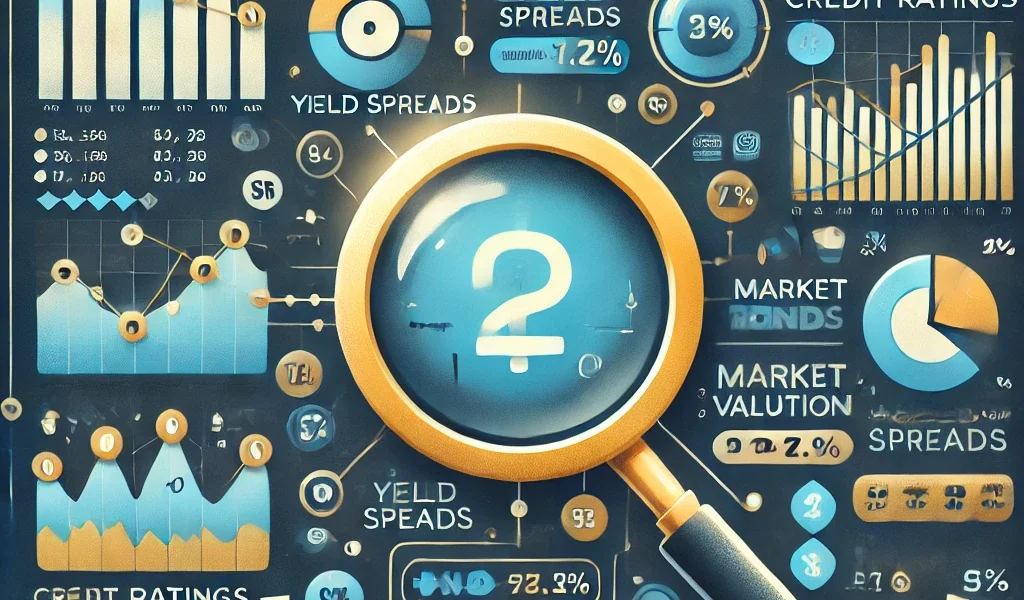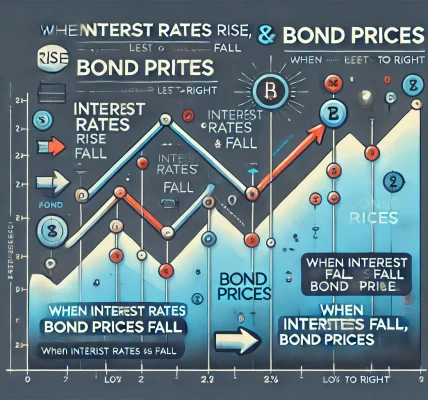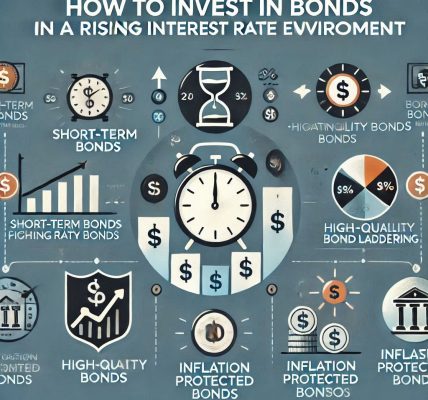Introduction
In the world of investing, finding undervalued bonds can offer a lucrative opportunity for those who know where to look. Undervalued bonds are securities that trade below their intrinsic value, providing investors with potential capital appreciation and higher yields. Identifying these bonds requires a keen understanding of market dynamics, bond valuation methods, and economic indicators. In this guide, we will explore the strategies and techniques to spot undervalued bonds in the market while mitigating risks and maximizing returns.
What Are Undervalued Bonds?
Undervalued bonds are fixed-income securities that are priced lower than their fair market value based on fundamental analysis. This undervaluation can result from various factors, including market inefficiencies, interest rate changes, or issuer-specific risks. By identifying and investing in undervalued bonds, investors can benefit from price corrections and improved yields.
Why Do Bonds Become Undervalued?
Bonds can become undervalued due to several reasons:
- Market Sentiment: Negative investor perception can drive bond prices down regardless of the issuer’s financial health.
- Interest Rate Fluctuations: Rising interest rates typically cause existing bond prices to fall, creating opportunities for undervaluation.
- Economic Conditions: Economic uncertainty can impact bond valuations, particularly in sectors viewed as risky.
- Credit Rating Changes: Downgrades may cause an overreaction in the market, leading to undervaluation.
- Liquidity Issues: Bonds with lower trading volumes may be mispriced due to limited demand.
Key Metrics to Identify Undervalued Bonds
When analyzing potential bond investments, pay attention to these key indicators:
- Yield to Maturity (YTM): Compares a bond’s annualized return if held until maturity. Higher YTM relative to similar bonds may indicate undervaluation.
- Credit Spread: The difference between the bond’s yield and a risk-free rate (e.g., U.S. Treasury bonds). Wider spreads may signify undervaluation.
- Price-to-Par Ratio: Bonds trading significantly below their face value (par) may be undervalued if the issuer remains solvent.
- Duration: Measures a bond’s sensitivity to interest rate changes. Bonds with higher durations can become undervalued when rates rise.
- Coupon Rate: Bonds with above-average coupon payments may be underpriced if the market overemphasizes future rate increases.
Techniques to Spot Undervalued Bonds
- Comparative Analysis: Compare similar bonds within the same industry or rating category to identify discrepancies.
- Monitor Credit Rating Changes: Look for bonds recently downgraded but where fundamentals remain strong.
- Economic Cycles Awareness: Identify bonds undervalued due to temporary economic downturns or overblown fears.
- Use Bond Screeners: Utilize online tools and platforms to screen for bonds with high YTMs and wide credit spreads.
- Assess Callable Bonds: Check if callable bonds are trading below fair value due to mispricing concerns about early redemption.
Fundamental Analysis of Bonds
Conducting a thorough fundamental analysis helps validate whether a bond is genuinely undervalued:
- Issuer’s Financial Health: Examine balance sheets, cash flows, and debt-to-equity ratios.
- Industry Trends: Evaluate macroeconomic conditions affecting the bond issuer’s sector.
- Covenants and Terms: Understand bondholder protections and redemption provisions.
- Default Risk: Analyze the issuer’s history of meeting obligations and assess default probabilities.
Risks of Investing in Undervalued Bonds
While the potential rewards of investing in undervalued bonds are appealing, there are risks to consider:
- Credit Risk: Possibility that the issuer may default on interest or principal payments.
- Liquidity Risk: Difficulty in selling the bond without significant price concessions.
- Interest Rate Risk: Rising rates can further depress bond prices.
- Market Timing: Incorrectly identifying undervaluation can lead to losses.
Strategies to Minimize Risk
- Diversification: Spread investments across different issuers, industries, and maturities.
- Credit Analysis: Rely on reputable third-party credit ratings and independent research.
- Laddering Strategy: Build a bond ladder to balance yields while managing reinvestment risks.
- Stay Informed: Regularly monitor economic reports, interest rate forecasts, and credit market developments.
The Role of Technology in Identifying Undervalued Bonds
Modern investors have access to advanced tools and data analytics for spotting undervalued bonds:
- Bond Rating Agencies: Use resources from Moody’s, S&P, and Fitch for comprehensive credit insights.
- Financial Platforms: Leverage Bloomberg, Morningstar, and other databases for screening and tracking bond prices.
- Algorithmic Tools: Consider AI-driven analytics for real-time valuation assessments.
Case Study: Spotting an Undervalued Bond
Imagine a corporate bond from a reputable issuer downgraded due to temporary sector-wide disruptions. Despite strong financials and cash flow, market panic pushes the bond price 20% below par. An investor analyzing the company’s fundamentals and future earnings can identify the mispricing and capitalize on eventual price correction.
Conclusion
Identifying undervalued bonds requires a blend of quantitative analysis, market insight, and due diligence. By understanding the factors behind bond undervaluation and applying systematic evaluation techniques, investors can uncover hidden opportunities in the fixed-income market. However, it is essential to balance potential rewards with risks and maintain a diversified portfolio.
Always consult a qualified financial advisor to align bond investments with your overall financial objectives and risk tolerance.



